After working on several SEO projects for clients in Malaysia and successfully ranking their websites on Google for them, I’ve come to notice that too many SEO tutorials online tend to be very complicated.
As a result – most people (maybe you!) give up on SEO, because it’s just too much!
Unless you work in an ultra-competitive niche, most businesses in Malaysia can rank their website, by following some simple SEO optimization. You don’t need to improve your page speed by 0.45 seconds to rank your website.
In this post, I’ll show you how to optimize your web content and rank your website, the way I’ve done it for our clients.
Does your content satisfy a search intent?
Why should anybody find your content? This is the first question to answer.
Many SEO marketers write articles just for the sake of trying to rank. As a result, their articles are often ‘dry’ and meaningless. You’ll know it when you come across such an article. And my guess? You probably hate it.
The main reason your content should be found online – is if it satisfies the search intent of a user.
Let’s say I want to buy a drill. So I search for “cordless drill in Malaysia”. Well, the last thing I want to see is a 2,000 words article titled “The How & Why of Cordless Drills in Malaysia”.
And yet – SEO marketers do that kind of nonsense!
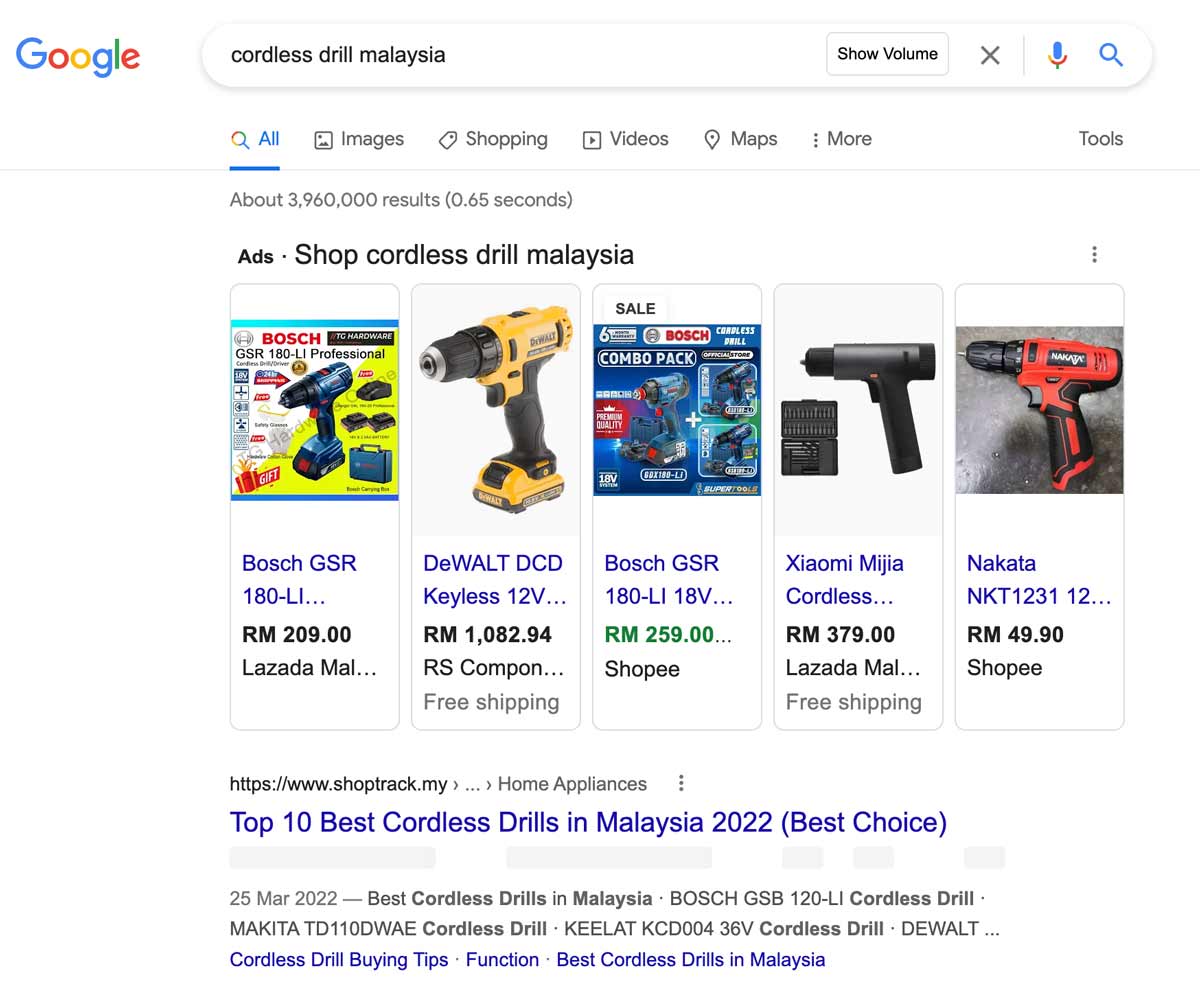
Instead, I just want to buy a drill. So show me websites where I can buy a drill from. Also, show me the best deals.
Speaking about drills. Here’s a marketing lesson on selling benefits over features:
Thankfully, Google is quite smart about filtering away bullshit, ‘optimized-for-SEO’ content. Even if you successfully ranked a bullshit content, eventually the search algorithm will learn the behavior from users who visits your webpage and de-rank it.
How to optimize your webpage for SEO.
Whether it’s a blog post, product page, or homepage, search engines see the same thing – HTML (Hypertext Markup Language).
Essentially, the way you optimize any web page is the same. Let’s dig in.
1 – Optimize your page title.
One of the things a search engine looks at to figure out what your webpage is about is the page title.
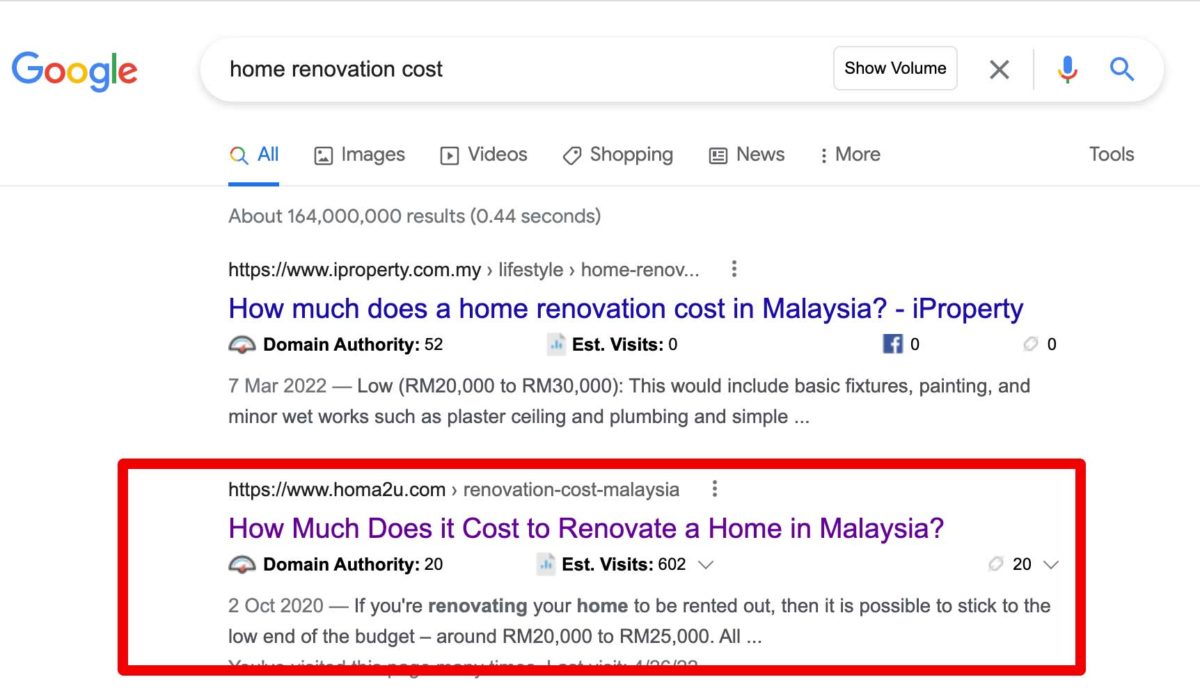
Google’s search algorithm, BERT is smart. It understands the full context of a word by looking at the words that come before and after it. Put simply – you no longer have to place an exact keyword in your page title. Just make sure your page title relates to the keyword you’re optimizing for.
In the image example above, notice that I didn’t necessarily put in the exact keyword (home renovation cost) that I wanted to rank for.
About keyword research: For the purpose of keeping this content short, I’ll leave keyword researching for another post. Ideally, before you optimize your webpage, you need to identify keywords with a good amount of searches.
2 – Place your keyword in the first few paragraphs.
You want to quickly help the search engines understand what your webpage is about, so ideally, place your keyword in the first few paragraphs.
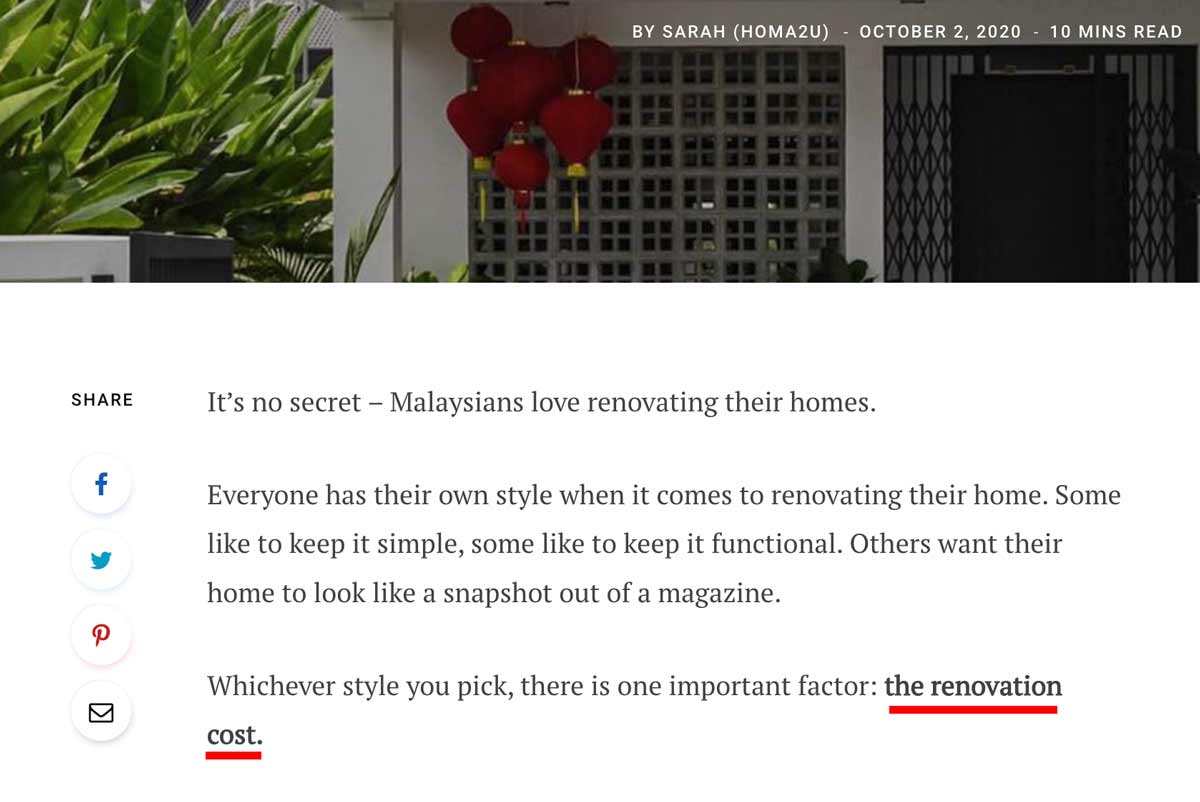
Again, notice that you don’t have to use the exact keyword. In fact, some keywords can be a little unnatural to fit into sentences.
3 – Place related keywords within your content.
To further help the search engine understand the context of your webpage, place sub-keywords throughout the content. Sub-keywords are keywords that relate to the main keyword you’re optimizing your content for.
My favorite way to identify sub-keywords is to simply do a Google search, then scroll down and see the related searches. (See example below).
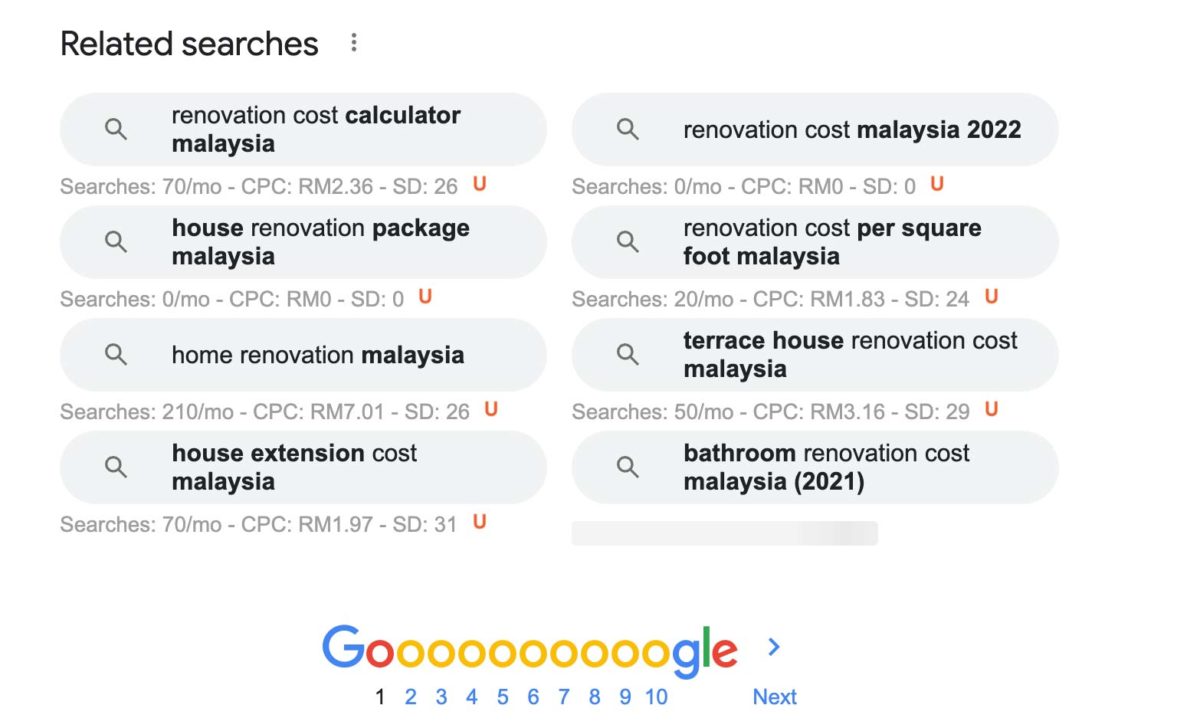
Don’t stuff keywords in your content. SEO marketers that do this usually see their website getting blacklisted by Google – because it doesn’t add any value.
4 – Include useful images, videos, or infographics.
Depending on the context, adding media to your content can add to the user experience. When searches stay longer on your content, this signals to Google that your content is high-quality and it deserves the rank.
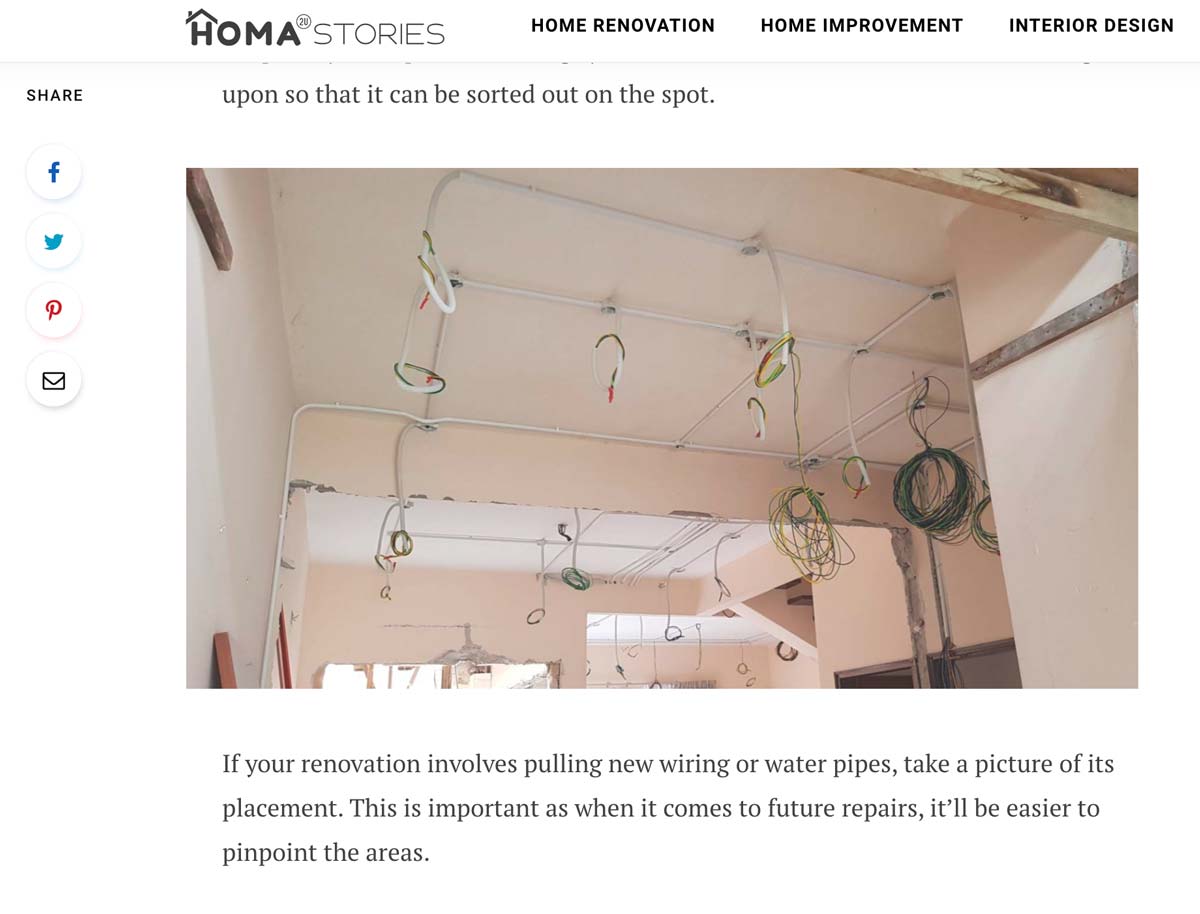
If you upload images to the content, make sure that the file size is small (preferably below 100KB). This keeps your web page light so that it will load quicker when a user lands on it.
Helpful image optimization tools:
Also, don’t forget to include a keyword in the alternative text (alt text) of the image. Originally, alt text was designed for visually-challenged people using screen readers. But it also helps the search engine identify the image.
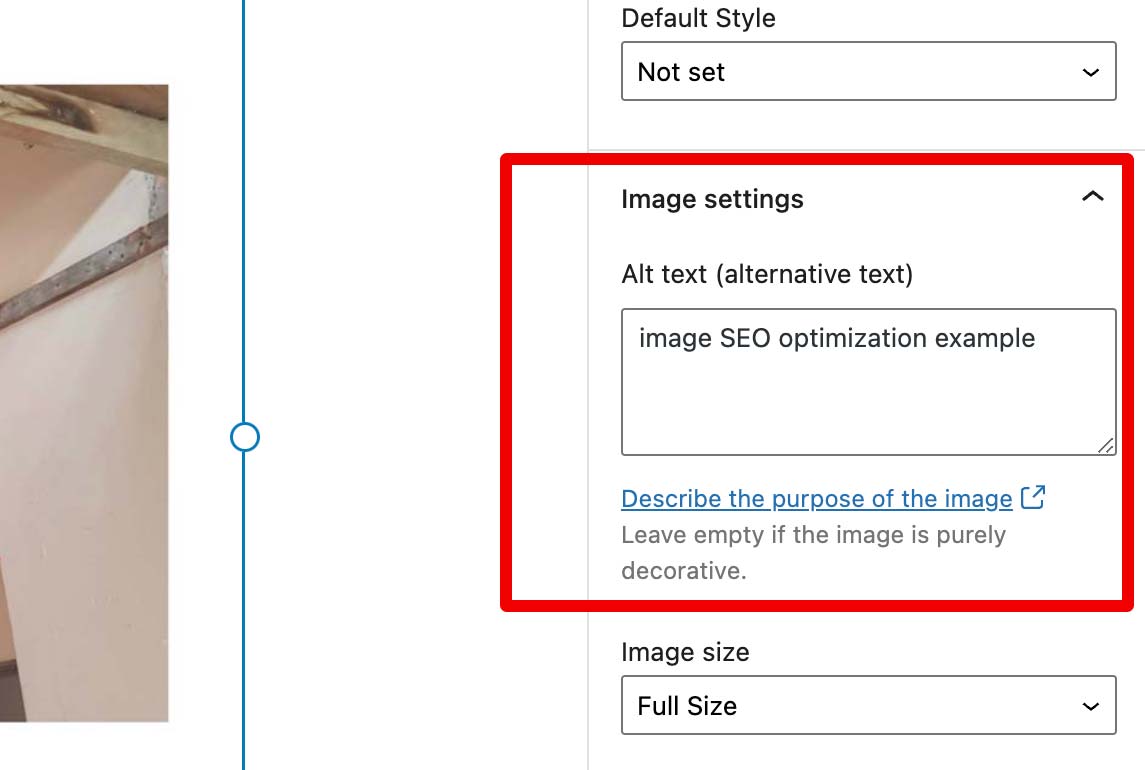
5 – Format your content.
I like to think of a webpage (blog post, page, or product page) as a book. In a book, you have titles, headings, sub-headings, and paragraphs.
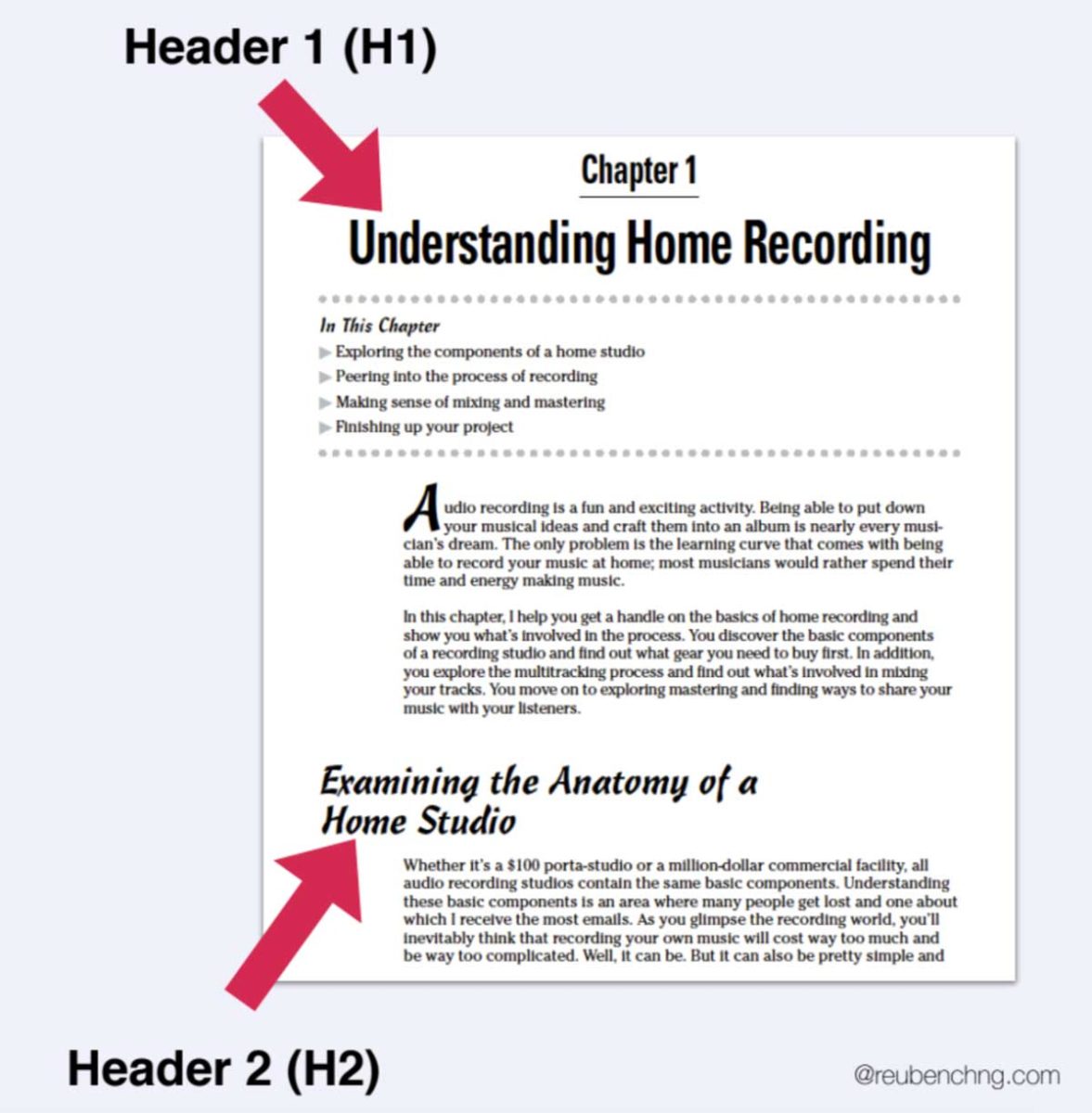
The same for optimizing your content. Don’t bunch words together. On screen, people tend to skip around your content. The idea here is to make the experience great for your readers. Let me break it down.
Put keywords into your header & sub-headers.
Two reasons for this. First, it helps the search engine identify your content. Second, it acts as a ‘skim-stopper’. Readers searching for ‘renovation cost’ will scroll through an article to find a headline that says ‘renovation cost’.
Keep paragraphs short (Max 250 words each)
Online readers skim. They don’t read word to word. Breaking down large paragraphs into chunk-sized paragraphs will provide better readability and overall a better user experience.
Use bullet-points.
Bullet points are like cheat codes for content. It helps highlight important information and draws the attention of readers. It’s also why most opt-ins are made out of bullet points. (See example below)
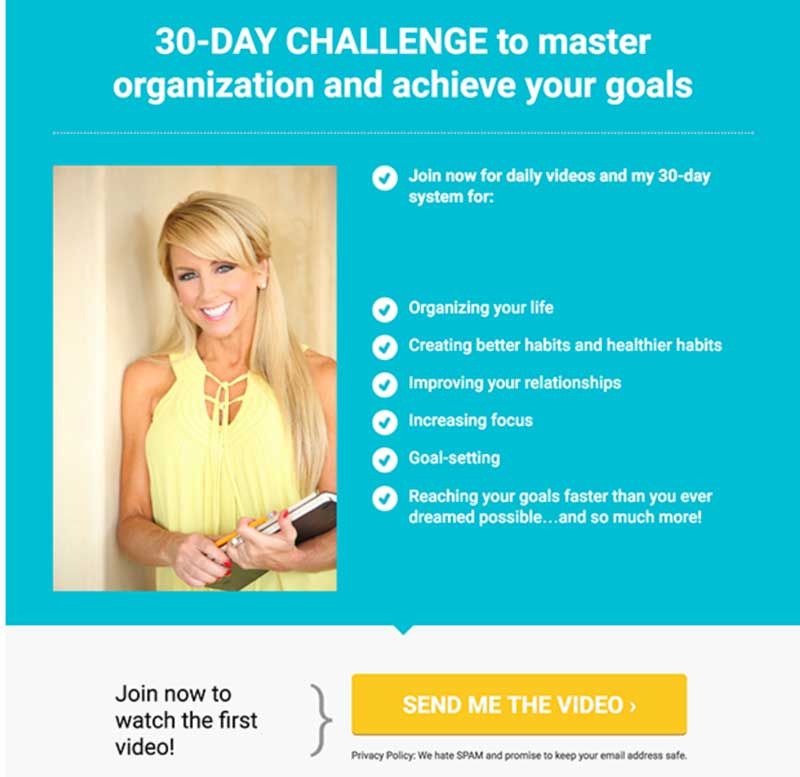
6 – Optimize your meta description (for people.)
A meta description is simply an HTML element that provides a summary of your web page. This summary is also displayed on the search engine results page (SERP) and is meant to give searchers an idea about the content of the webpage.

Optimize the meta title and descriptions, by including your keywords. At the same time, make sure to keep the title and description catchy, so that searchers will be inclined to click on it.
On WordPress, I use Yoast SEO or SEOPress to write the meta title and descriptions. Depending on your web platform, it might be different. However, fundamentally, all web pages should have a meta title and description.
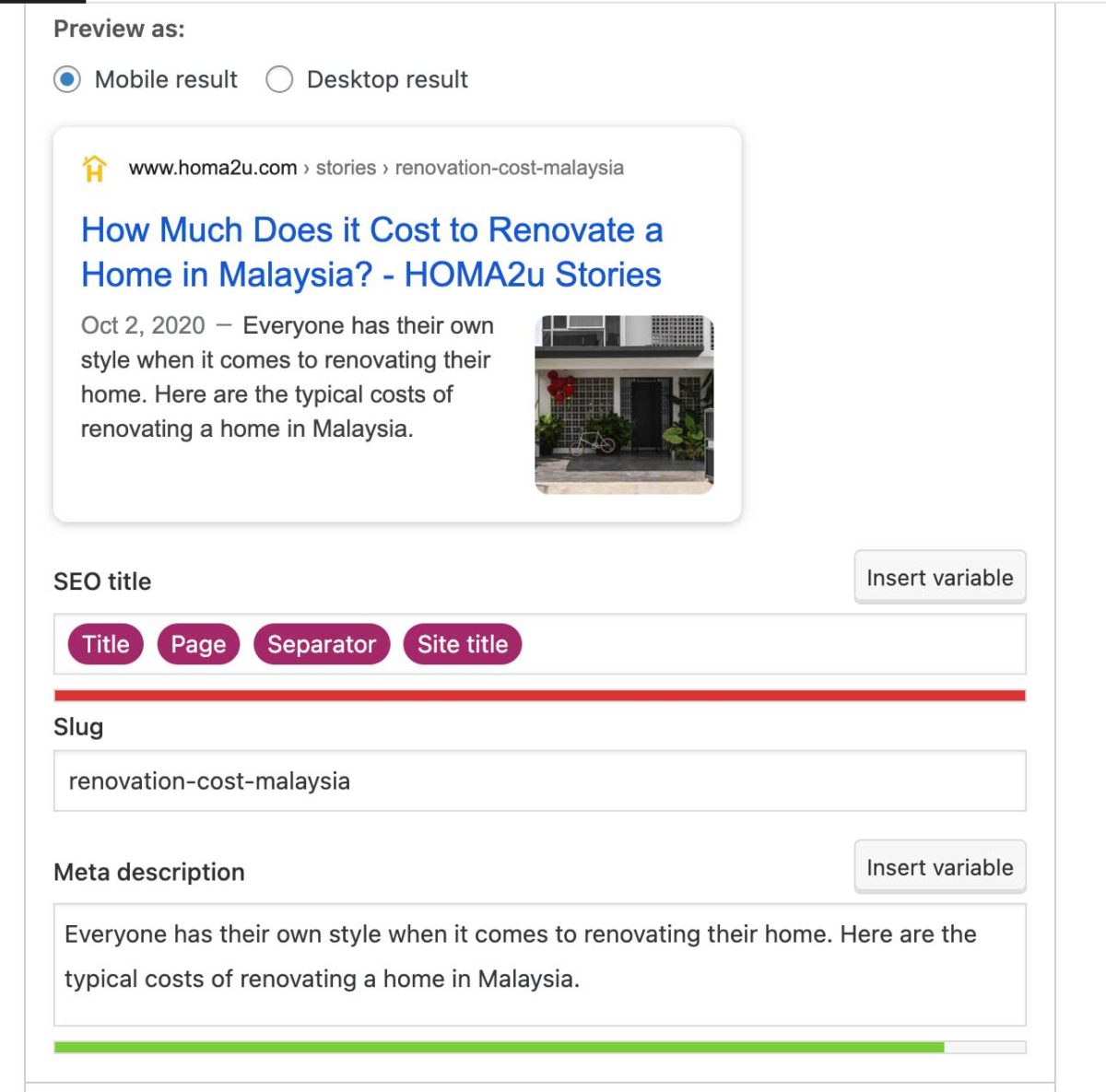
7 – Put your keyword into the permalink.
Before you hit publish, make sure to place your keyword into the permalink. ‘Permalink’ is short for permanent link, which is what search engines will crawl and index into their database.
Again, you don’t have to put the exact keyword into your permalink. Keep the permalink short and neat.
In my example, the keyword I was optimizing the content for was ‘home renovation cost Malaysia’, but I kept it short and simply used ‘renovation-cost-malaysia’ which was essentially the same thing. (See below)

What about technical SEO?
Technical SEO refers to optimizing the technical parts of your website, to enable the search engines to crawl and index your website.
A few things come into mind, such as:
- Page speed. (Website and server optimization)
- Mobile responsiveness.
- Website sitemap (Sitemap helps search engine robots to understand your site.)
- Page render-ability.
- Backlinks. (Links from other websites pointing to yours.)
The thing is if you use platforms like WordPress, Shopify, or Webflow – the fundamental technical SEO has already been taken care of for you.
You can of course, further optimize your website – doing every possible optimization under the sun – but the extra gains you get from that would be negligible.
To share an analogy: It’s like buying a Honda car, then modifying its tires and exhaust, hoping to get some extra speed out of it – when you’re perfectly fine just driving the car without doing any modification.
I won’t go deep into technical SEO in this post. But I’ll leave you with this tip. Make sure to add your website to Google Search Console. It will tell you if you have technical SEO issues you need to fix.
Ready to rank your website?
Follow the steps above and you should be on your way to ranking your website in no time. Yes, SEO is a huge subject and there are literally hundreds of things you can optimize on your website.
However, as long as you get the fundamentals right – plus provide the right context and value on your web page, your website should rank on the search engines.
Like marketing lessons like this? I send subscriber-only marketing lessons that will help you do better marketing, twice a week. Put in your email below to get them. I’ll even send you a small gift right away.

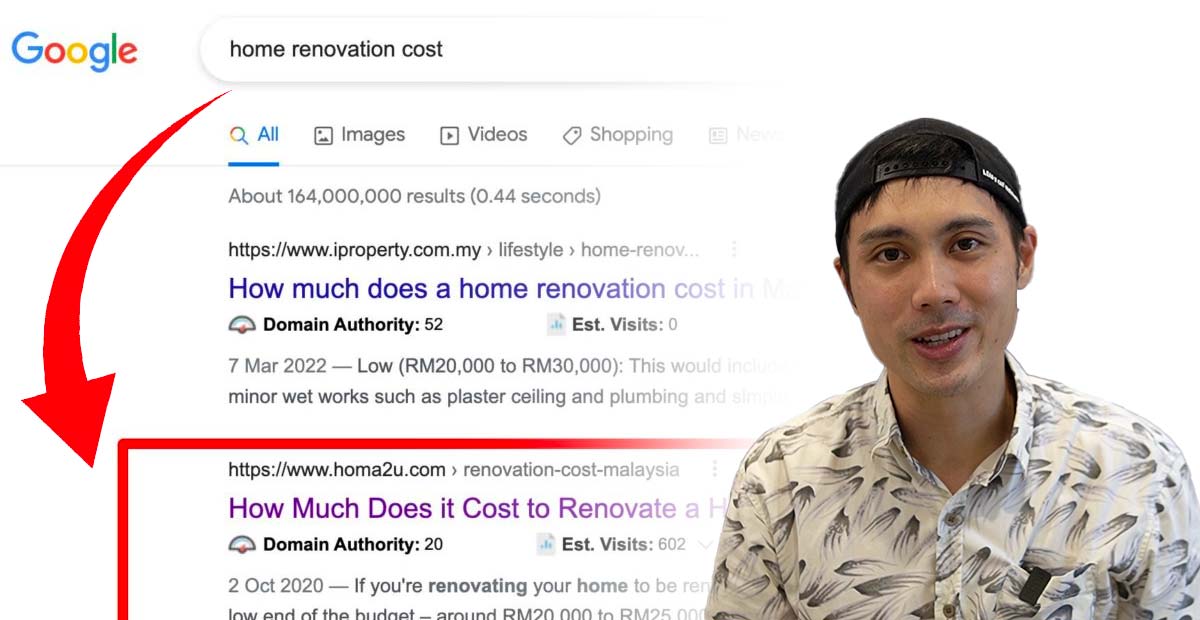
0 Comments